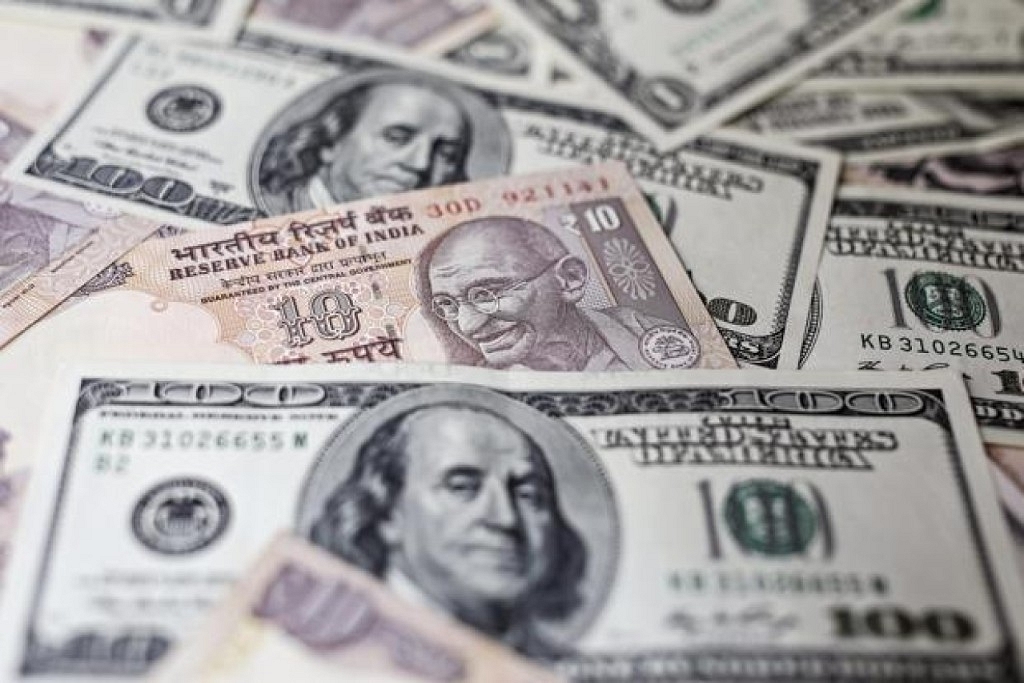Economy
Despite A Good Forex War-Chest, RBI Should Stock Up On $25-50 Billion Of Extra Ammo
- We don’t lack resources to defend excess volatility in the rupee-dollar rate, but the point is to bolt the stable door before the horses bolt.
- The time for Naya Bharat NRI bonds is now.

Volatility in rupee-dollar rate
Given the precarious perch of the rupee at just under Rs 70 to the US dollar, the point that there is no need for panic may well go unheeded. Maybe, just maybe, it is time for a new round of dollar-denominated NRI Bonds. Let’s call them Naya Bharat bonds.
Even if the currency stays volatile for an extended period, our large war-chest of foreign exchange reserves, and our ability to finance even a rising current account deficit, can leave no one in any doubt that we have the ammo to defend the rupee.
However, as Sun Tzu might well point out, the best war is the one that is won without fighting.
This, however, is not the case. The Reserve Bank of India (RBI) has been fighting in the trenches to keep the rupee from suddenly capsizing, but speculators are still testing its nerves.
Between March-end and 10 August, the Reserve Bank of India saw its foreign exchange reserves fall by nearly $24 billion, and the reserves are currently just above $400 billion. This fight is beginning to cost us some resources.
While the current account deficit is widening, it is not so bad as to warrant an alarmist view on the rupee’s downward trajectory, which is as much due to its past overvaluation as the current strength of the US dollar against all currencies. But the real problem with the market – any market – is that it often tends to overcorrect. A range of Rs 68-72 may well be right for the rupee right now, but when foreign investors are spooked by its recent sharp fall, they may well choose to rush to the exits even when staying on may prevent exchange rate losses. Sometimes, the herd instinct gets the better of logic.
In calendar 2018 till 8 August, foreign institutional investors have been looking at the exits, selling over $5.5 billion in equity and debt.
And if the RBI is seen to be spending billions of dollars to keep speculation from becoming a one-way bet, seeing reserves fall below the psychological levels of $400 billion (or even $350 billion) may only trigger more panic. In short, there is no real need for panic, good sense lies in proactively preventing one from building up.
Abheek Barua, Chief Economist at HDFC Bank, wrote in a The Times of India today (20 August) that the central bank must “look into its armoury and get the bigger bazookas out (like a fund raising scheme aimed at the Indian diaspora) and not stop at merely selling dollars from its reserves.”
Ruchir Sharma of Morgan Stanley had a calming, yet cautionary, note to offer in an interview to The Economic Times. He said: “I won’t read too much into what is happening with the rupee. But the current account deficit (CAD) is something that is being watched. If you look at the current account deficit of India and many other countries since 2013 when the taper tantrum happened, they have improved. But, whenever we have had a strong dollar, it has never been good for developing economies like India.
In 2013, the RBI offered banks a lucrative scheme of forward cover which allowed them to bring in non-resident deposits at good rates, without fear of losing out on exchange rates when deposits matured. These balances have since been unwound without any damage to the reserves or the RBI’s balance-sheet.
Clearly, Barua’s is good advice. Whenever we have done this at the right time – whether after the 1991 reforms, the post-Pokhran global sanctions, or in 2013 – this kind of scheme has always worked for us.
We don’t lack resources to defend excess volatility in the rupee-dollar rate, but the point is to bolt the stable door before the horses bolt. The time for Naya Bharat NRI bonds is now. The target range should be $25-50 billion, preferably the latter.
Introducing ElectionsHQ + 50 Ground Reports Project
The 2024 elections might seem easy to guess, but there are some important questions that shouldn't be missed.
Do freebies still sway voters? Do people prioritise infrastructure when voting? How will Punjab vote?
The answers to these questions provide great insights into where we, as a country, are headed in the years to come.
Swarajya is starting a project with an aim to do 50 solid ground stories and a smart commentary service on WhatsApp, a one-of-a-kind. We'd love your support during this election season.
Click below to contribute.
Latest